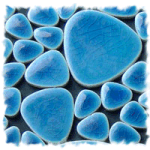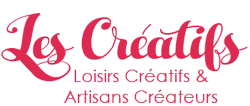 |
Anart form dating back to Antiquity, mosaics still appeal to a wide variety of creative styles. The principle is to glue together broken pieces of tile, called "tesserae", to reproduce geometric or pictorial designs. |
The advantage of mosaics is that they can be usefully initiated with a trivet or a classic mirror, before moving on to more imposing creations, right up to the garden table, bathroom frieze or kitchen worktop... because mosaic supports are so numerous.
Mosaic supports
 |
|
The main families of tesserae :
| Type | Special feature | Thickness | Common dimensions |
| Briare enamels | Matt or glossy | 3.5 mm | 250 x 250 mm |
| Ceramics | Matt | 3.2 mm | 200 x 200 mm |
| Glass paste | Plain, iridescent | 3.5 mm | 200 x 200 mm |
| Stained glass | Ideal for photophore | 3.5 mm | 200 x 200 mm |
|
Think aboutthe materials you already have at home: tile elements (thin enough to be easily broken and trimmed), pieces of mirror, old crockery, Fimo paste elements etc... Anew material for mosaics: Mosaclic. This product requires no cutting pliers or special tools. We've tested it, and we'd like to show you a model with a step-by-step D'clic mosaic. |  Japanese pebbles: to be laid without cutting |





